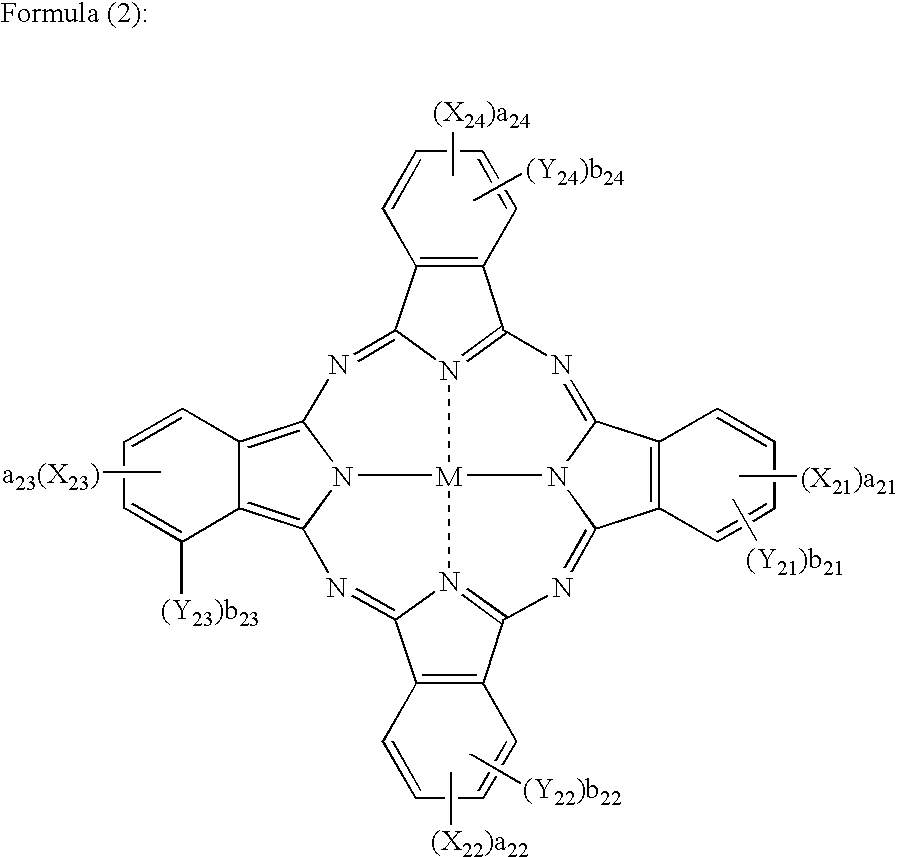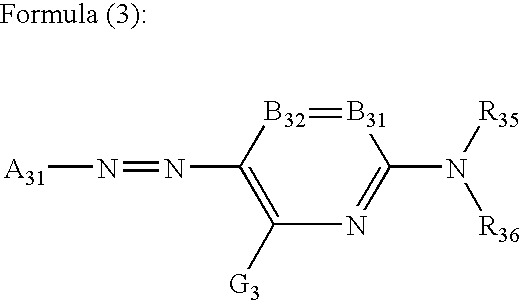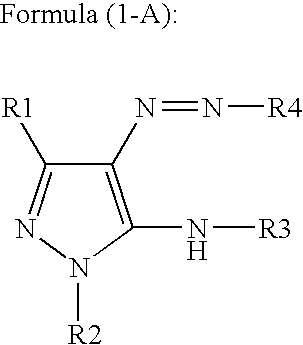Ink and ink set
a technology of ink and ink, which is applied in the field of inkjet printers, can solve the problems of difficulty in finding out a coloring agent satisfying all requirements in a high level, the color index (c.i.) number of conventionally well-known dyes and pigments can hardly meet the color hue and fastness requirements of ink for inkjet recording,
- Summary
- Abstract
- Description
- Claims
- Application Information
AI Technical Summary
Problems solved by technology
Method used
Image
Examples
example 2
[0548] About five kinds of monochromatic inks in total of cyan inks containing C-1, C-2, C-3, and C-4, respectively, magenta inks containing M-1, M-2, M-3, and M-4, respectively, yellow inks containing Y-1, Y-2, and Y-3, respectively, and black inks containing Bk-1 / Bk-2, Bk-3 / Y-3, Bk-4 / Y-3, and Bk-3 / Bk-4 / Y-4, respectively, which were used in Example 1, monochromatic images were formed and further drawing was carried out similarly to Example 1 and the ejection stability on drawing and the respective fastnesses of the images drawn to light, heat, and ozone were evaluated according to the methods as described in Example 1. The inks satisfying the requisites of the invention, that is, cyan inks containing C-3 and C-4, respectively, magenta inks containing M-3 and M--4, respectively, yellow inks containing Y-2 and Y-3, respectively, and black inks containing Bk-3 / Y-3, Bk-4 / Y-3, and Bk-3 / Bk-4 / Y-4, respectively, satisfied all the ejection stability and the respective fastnesses and were ra...
PUM
| Property | Measurement | Unit |
|---|---|---|
| reflection density OD | aaaaa | aaaaa |
| absorption maximum wavelength | aaaaa | aaaaa |
| concentration | aaaaa | aaaaa |
Abstract
Description
Claims
Application Information
 Login to View More
Login to View More - R&D
- Intellectual Property
- Life Sciences
- Materials
- Tech Scout
- Unparalleled Data Quality
- Higher Quality Content
- 60% Fewer Hallucinations
Browse by: Latest US Patents, China's latest patents, Technical Efficacy Thesaurus, Application Domain, Technology Topic, Popular Technical Reports.
© 2025 PatSnap. All rights reserved.Legal|Privacy policy|Modern Slavery Act Transparency Statement|Sitemap|About US| Contact US: help@patsnap.com



